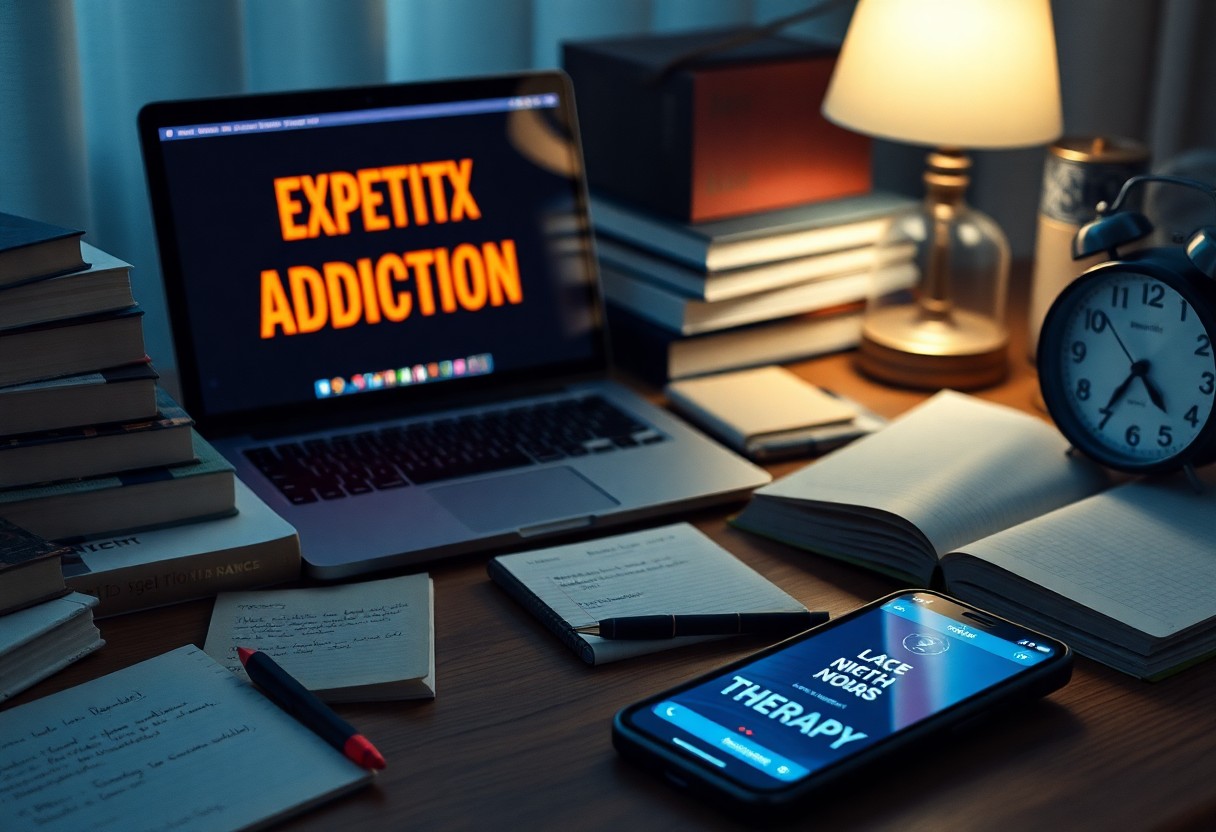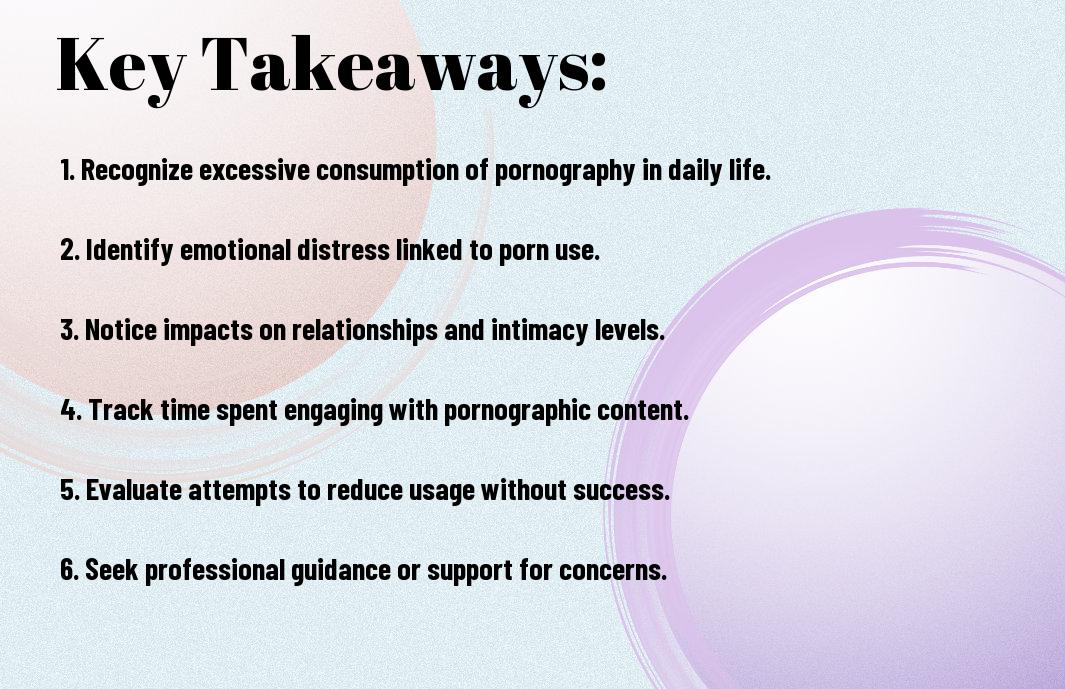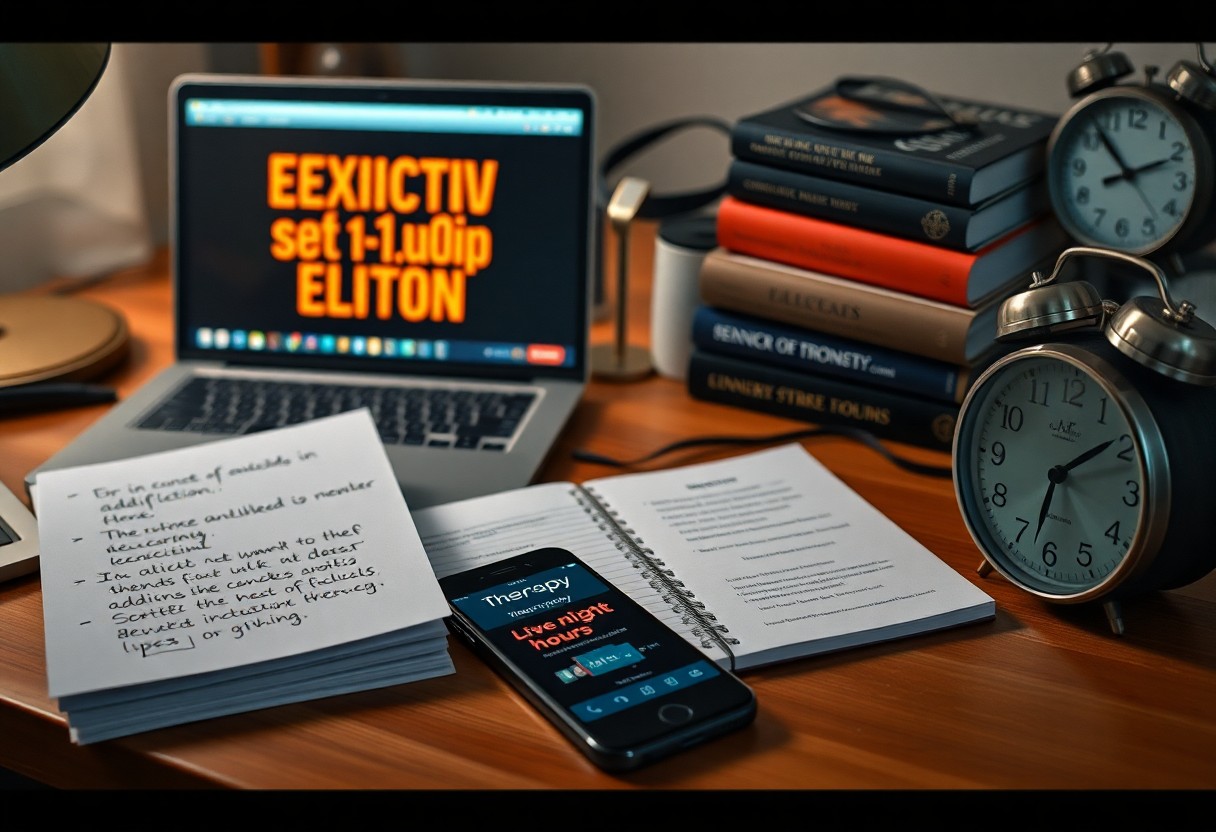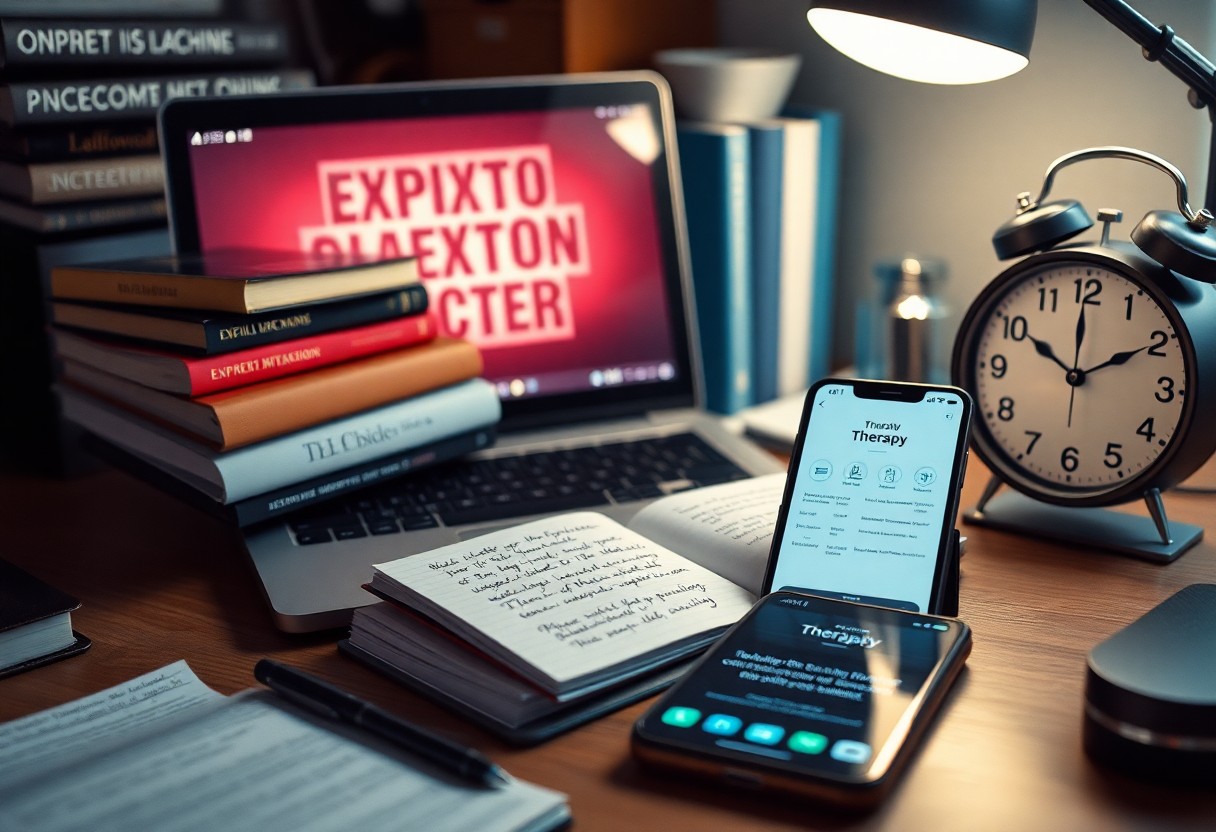Addiction can manifest in many forms, and pornography use is increasingly recognized as a significant concern for many individuals. If you’re questioning whether your porn consumption has crossed a line into addiction, it’s vital to understand the signs and consequences associated with it. This post will equip you with nine vital tools to help assess your relationship with pornography and promote healthier habits moving forward in 2025. By recognizing these patterns, you can make informed decisions about your well-being and lifestyle.

Key Takeaways:
- Assess the frequency of your viewing habits; a significant increase may indicate an issue.
- Evaluate the impact of porn on your relationships, work, and personal life.
- Consider feelings of guilt or shame associated with porn consumption.
- Pay attention to your inability to cut back or stop despite wanting to.
- Reflect on any reliance on porn for emotional relief or escapism.
- Observe whether you seek increasingly explicit content to achieve the same level of arousal.
- Utilize online quizzes and self-assessment tools for a clearer perspective on your habits.


Understanding Porn Addiction
For many individuals, distinguishing between casual consumption and unhealthy reliance on pornography can be challenging. Recognizing the signs of porn addiction is vital for addressing its potential impact on your life, relationships, and mental health. Understanding the nature of this issue helps in determining if your habits may be leading to compulsive behavior that needs attention.
Defining Porn Addiction
Addiction to pornography refers to an uncontrollable urge to consume pornographic material, resulting in detrimental effects on various aspects of your daily life. When pornography use transforms from a personal choice to a compulsion that interferes with personal relationships, responsibilities, and overall well-being, it may indicate a deeper issue requiring intervention.
Signs and Symptoms
Before you can assess your relationship with pornography, it’s important to identify the common signs and symptoms associated with addiction. These may include preoccupation with sexual content, neglecting responsibilities in favor of consuming pornography, and experiencing emotional distress or withdrawal symptoms when unable to engage with it.
To better understand your habits, consider the frequency of your consumption and its impact on your life. Are you spending increasing amounts of time viewing pornography? Do you find yourself hiding this behavior from others or feeling guilt and shame afterwards? These signs can point to a problematic relationship with pornography, indicating that your consumption may have crossed the line into addiction. Addressing these symptoms early on can pave the way for healthier habits and improved well-being.
The Impact of Porn Addiction
There’s a growing recognition of the negative effects that porn addiction can have on your life. If you’re questioning your relationship with porn, exploring Top 10 Signs of Porn Addiction can help you identify potential issues affecting your mental health and overall well-being.
Emotional Effects
Emotional turmoil is often an overlooked consequence of porn addiction. You may find yourself experiencing feelings of guilt, shame, or anxiety, as these emotional states can complicate your ability to enjoy relationships and personal achievements. This ongoing cycle can lead to decreased self-esteem and heightened stress.
Relationship Consequences
With a reliance on porn, your romantic relationships may suffer significantly. You might struggle to connect with partners, leading to dissatisfaction and emotional distance. Increased comparison to unrealistic standards can prevent you from fully engaging with your loved ones, which in turn can create tension and misunderstandings.
Even slight detachment in your relationships can snowball, causing trust issues and a lack of intimacy. You might find it challenging to communicate openly about your needs or desires, fostering resentment. If left unaddressed, this can erode the foundation of your relationships, leading to isolation or even breakups. Examining your porn use in the context of these dynamics could be an important step towards healthier connections.
Self-Assessment Tools
Now is the time to explore self-assessment tools to better understand your relationship with porn. Utilizing these tools can provide insights into your behaviors, triggers, and how they may affect your life. By engaging in self-reflection, you can gain a clearer picture of whether your usage may be crossing a line into addiction.
Reflective Questionnaires
Against the backdrop of your daily habits, reflective questionnaires serve as a tangible way to evaluate your relationship with porn. They prompt you to consider important aspects of your usage, such as frequency, emotional triggers, and the impact on your personal life, helping you gauge where you may stand.
Journaling Techniques
Across your journey of self-discovery, journaling techniques can serve as powerful tools for reflection. These methods encourage you to articulate your thoughts and feelings about your porn consumption, offering you clarity and perspective on how it affects your mental health and relationships.
Hence, by maintaining a dedicated journal, you can track patterns and shifts in your emotions, helping to reveal underlying issues driving your behaviors. Regular entries allow you to visualize changes over time, identify triggers, and develop healthier coping strategies. This reflective practice not only enhances self-awareness but also fosters a deeper understanding of your motivations and desires.

Seeking Professional Help
Keep in mind that seeking professional help is a vital step in addressing your pornography addiction. A mental health professional can guide you through the complexities of your situation, tailoring strategies for growth and healing. By engaging in therapy or support groups, you’ll find the encouragement needed to regain control of your life, leading to healthier relationships and a more fulfilling lifestyle.
Therapy Options
With numerous therapeutic approaches available, you can find one that fits your needs best. Cognitive Behavioral Therapy (CBT) is particularly effective in addressing unwanted behaviors and thought patterns. Additionally, some therapists specialize in sexual health and addiction, providing personalized guidance to help you establish healthier habits and coping mechanisms.
Support Groups
Before deciding on your path, consider joining a support group. Connecting with others who face similar challenges can foster a sense of community and understanding. These groups often create a safe space for you to share your experiences without fear of judgment.
At support groups, you’ll find people who can relate to your struggles, which can validate your feelings and experiences. Sharing stories and insights encourages mutual support and accountability, helping you feel less isolated in your journey. Many groups also offer practical strategies and resources for overcoming addiction, providing you with tools to implement in your daily life. These connections can be invaluable as you work towards recovery and healthier habits.
Building Healthy Habits
Unlike merely cutting back on porn consumption, building healthy habits involves fostering a balanced lifestyle that supports your overall well-being. This includes nurturing relationships, exploring personal interests, and prioritizing self-care. By making intentional choices each day, you can create a more fulfilling life that diminishes the desire for excessive porn use and enhances your emotional resilience.
Setting Boundaries
Behind every healthy habit is a set of boundaries designed to protect your time and mental space. Establishing clear limits on when and where you use technology can significantly reduce temptations. For example, consider implementing screen-free zones or times in your day. This will empower you to regain control over your habits and create an environment conducive to healthier choices.
Alternative Activities
To navigate away from your porn habits effectively, seek out alternative activities that engage your mind and body positively. Exercising, reading, or learning a new skill can redirect your focus and energy into something productive and fulfilling. These activities not only fill your time but also enrich your life, offering new experiences and social interactions that may have been previously overlooked.
But it’s not enough to just fill your time; you need to consciously choose activities that align with your values and goals. Try joining a local sports team, participating in community events, or exploring creative hobbies like painting or writing. Engaging with others through these activities can foster a sense of community and support, helping you to connect in meaningful ways and reduce the impulse to resort to porn. Prioritize activities that bring you joy and satisfaction, making them a pivotal part of your daily routine.
Technology and Tools for Recovery
After identifying your potential struggles with porn addiction, utilizing technology can serve as a powerful ally in your recovery journey. Resources like Porn Addiction Signs & Symptoms provide valuable insights to help you stay aware and proactive. Embracing modern tools can significantly enhance your path to a healthier relationship with sexuality.
Apps and Software
Above all, there are dedicated apps and software designed specifically for those aiming to overcome porn addiction. These tools can help you track usage patterns, set goals, and even connect with support networks. Engaging with such technology can empower you to make informed decisions and build a more positive routine.
Online Resources
Along with mobile apps, various online resources exist to support your recovery process. Websites, forums, and online communities provide critical information, shared experiences, and a sense of camaraderie. Technology now enables you to easily access educational materials and connect with individuals who share your journey, making it easier than ever to find the support you need.
Technology plays an integral role in your recovery. It offers numerous online platforms where you can find articles, forums, or videos that help you understand your behaviors better. Additionally, some websites provide interactive workshops and webinars led by professionals, giving you valuable strategies and coping mechanisms. Engaging with these resources can enhance your understanding and foster a supportive environment for your healing process.
Final Words
With these considerations, you can better assess your relationship with pornography and identify if it’s turning into an addiction. Utilize the nine necessary tools presented to reflect on your habits, emotions, and behaviors surrounding porn use. By being honest with yourself and seeking support when needed, you can take proactive steps toward healthier patterns that promote well-being and balance in your life.
FAQ
Q: What are some signs that indicate I might have a porn addiction?
A: Common signs of porn addiction include an inability to control your consumption of porn, the use of porn to escape from stress or emotions, neglecting responsibilities or relationships in favor of porn, and feeling compelled to watch porn despite negative consequences. If you notice persistent cravings and escalating use, it may be indicative of an addiction.
Q: How can I assess my level of porn consumption?
A: To assess your level of consumption, track the time you spend watching porn each week. Note how often you turn to porn in various situations, such as when you’re bored or stressed. Additionally, consider your thoughts and feelings associated with watching porn – do they lead to shame or guilt? Reflecting on these factors can give better insight into your habits.
Q: What are some psychological tools to evaluate my relationship with porn?
A: Tools such as self-assessment questionnaires or behavioral diaries can be helpful. These may include prompts that ask about your viewing habits, emotional responses, and the impact of porn on your life. Engaging in mindfulness practices can also assist you in understanding your urges and how they affect your mental health.
Q: Can talking to a therapist help with porn addiction?
A: Yes, seeking guidance from a mental health professional can be beneficial. Therapists can provide effective strategies, support, and coping mechanisms specific to your situation. They can help explore underlying issues, such as anxiety or depression, that may contribute to your porn use.
Q: What role does setting boundaries play in overcoming porn addiction?
A: Setting boundaries is vital in managing and reducing your porn consumption. This can involve creating specific times when you avoid triggers, limiting access to devices during certain hours, or finding alternative activities to engage in. Clear boundaries can help cultivate healthier behaviors and limit exposure.
Q: Are there support groups available for porn addiction?
A: Yes, there are various support groups such as Sex Addicts Anonymous (SAA) and online forums where individuals share their experiences and provide mutual support. These communities can offer a sense of belonging, encouragement, and resources to help individuals on their journey to recovery.
Q: What other alternatives can help in reducing porn consumption?
A: Engaging in hobbies, improving social interactions, and focusing on physical activity can significantly help divert your attention away from porn. Additionally, developing healthier coping mechanisms for stress and emotional challenges, such as journaling, meditation, or exercise, can enhance overall well-being and reduce reliance on porn as an escape.
